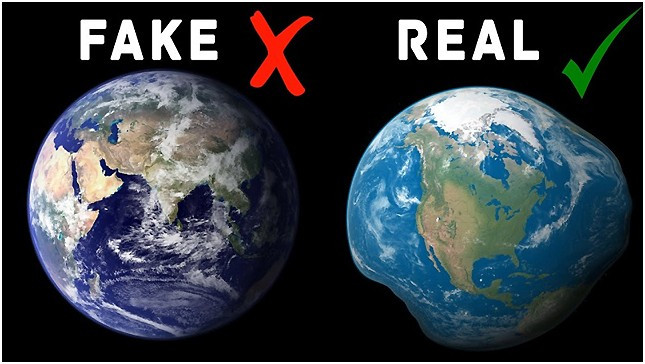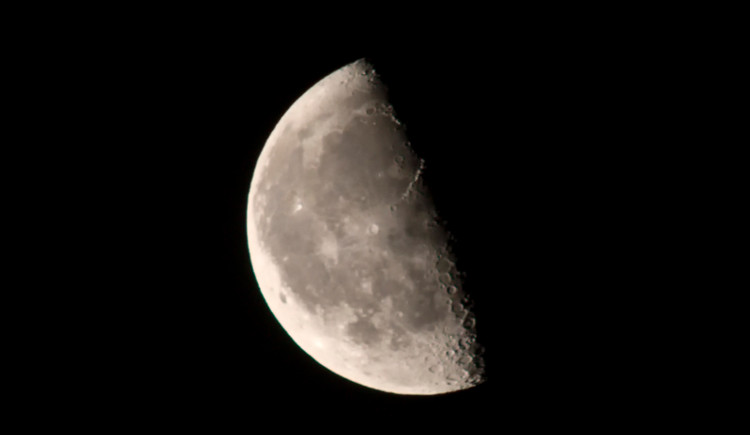6 common anecdotes about the universe far from reality
Surely there was a time when you wished you could go into space to see planets or find out what people would be like if they fell into a black hole. Basically, most of the current knowledge we know about the universe comes from fictional stories in Hollywood books or movies.
However, the reality has proved that there are many things that people are mistaken about the universe. Here are the 6 most popular anecdotes about the universe far from reality that will make you surprised.
Anecdote 1: Earth is round
You will surely think this is a matter of course. We have all learned since elementary school that the Earth is not a square or a plane, but a circle. This was confirmed by Copernicus for the first time and then proved with Magellan's round-the-world trip. However, is the Earth round like we imagined?

Our Earth is called the Geoid image by scientists.
Reality: Our planet is not really round. The exact shape of the Earth is known by scientists as the "Geoid " , the ideal shape of the ocean surface when only affected by gravity. When asked to describe the Earth, people would probably mention a globe or a ball. However, the most accurate description must be "Geoid" . In fact, the Earth swells at the equator and is flat at the poles. In addition, the continuous erosion and movement of tectonic plates keeps the surface of our planet constantly changing. In general, the Earth has a distorted spherical rather than an ideal circle.
Anecdote 2: The moon has a dark side
When we talk about the dark side of the moon, we often think it is the face on the side without the sun shining. So what's on the other side of the moon where people can't see it?

To see the other side of the moon, we have to fly away from Earth to enter space.
Reality: Both the Earth and the moon rotate together, which means we can't see the other side of the moon on the surface of the Earth. To see the other side of the moon, we have to fly away from Earth to enter space. In fact, when the moon rotates around its axis, most of its surface is also frequently illuminated by sunlight. Therefore, no dark face appears on the moon.
Anecdote 3: Mercury is the solar system's hottest planet
Many people believe that Mercury is the planet with the hottest temperature in the solar system because it is the closest planet to the sun. It sounds very reasonable but the closest is not always synonymous with the hottest.

Mercury's atmosphere is very thin, so its ability to retain heat is extremely poor.
Reality : Mercury's day temperature is about 420 degrees Celsius and one day of the planet is about 58 days on Earth. However, because the atmosphere is so thin, Mercury's ability to retain heat is extremely poor . The temperature on the side without the light of this planet is usually only -173 degrees C. If compared, the two poles of the Earth are still much warmer than Mercury.
Anecdote 4: You will explode if you don't wear cosmic protective gear
Hollywood movies cause many people to believe that if we fall into space without protective gear, our bodies will explode. At the moment you remove your hat, your head immediately swells and explodes. It's really stupid to go out into space without space protection and just half a minute outside is enough to kill a healthy person. However, death is not as terrible as it is described on the film.

Although death in space is not interesting, at least it is not as terrible as on film.
Reality: When you go into space without wearing protective gear, the blood vessels in your body under the sudden change of pressure will expand until it bursts and causes internal bleeding. Local. In addition, the body also feels extremely painful when choking due to lack of oxygen. However, bones, internal organs and skin will remain intact, not explode. Although death in space is not interesting, at least it is not as terrible as on film.
Anecdote 5: The sun is yellow
Depending on the time of day and the position of the sun, sometimes we see the sun is red, sometimes we see the sun is orange and often people see the sun is yellow. However, the truth is different from that of the majority.

If you have the opportunity to admire the sun from the spaceship, you will see that it is only white.
Reality: The sun emits white light . We often mistakenly think that the sun is yellow because only long light waves like gold and red are reaching our eyes without being blocked by the atmosphere . Meanwhile, short light waves such as violet or green are heavily blocked. So if you have the opportunity to admire the sun from a spaceship, you will see that it is only white.
Anecdote 6: Black hole sucks everything around it

Black holes have finite mass, so their gravitation is finite.
Once again, Hollywood misleads people to assume that the black hole sucks everything in its path and has a super-attractive force.
Reality : Imagine the sun being turned into a black hole. The Earth will fall into a cold period and people will freeze to death. However, our planet will not be attracted to the black hole. Black holes have finite mass, so their gravitation is finite. Scientists are not sure what will happen if you fall into a black hole, but at least, they can tell you that the black hole has no super attractive force as you might imagine.
- Can life really exist in the 2D universe?
- Do you have fear of heights? VR will be 'hero' to rescue you
- Virtual reality technology harms health
- Anecdotes should not believe other animals
- 5 most common myths about the universe
- 8 other applications of virtual reality may appear in the near future
- You will understand the real fear when wearing virtual reality glasses playing horror games when watching this clip
- Two men can still have a common child
- How are AR and VR different?
- Create the universe ... in the laboratory
- Learn how to swim and dive without a shirt thanks to technology
- Samsung's new virtual reality glasses will turn Iron Man's technology into reality
 Van Allen's belt and evidence that the Apollo 11 mission to the Moon was myth
Van Allen's belt and evidence that the Apollo 11 mission to the Moon was myth The levels of civilization in the universe (Kardashev scale)
The levels of civilization in the universe (Kardashev scale) Today Mars, the sun and the Earth are aligned
Today Mars, the sun and the Earth are aligned The Amazon owner announced a secret plan to build a space base for thousands of people
The Amazon owner announced a secret plan to build a space base for thousands of people Amazing discovery of 4.5 billion year old alien ocean of life
Amazing discovery of 4.5 billion year old alien ocean of life  What would happen if you dug a hole through the Earth and jumped in?
What would happen if you dug a hole through the Earth and jumped in?  Chilling discovery of cosmic object that almost brought the Earth to 'apocalypse'
Chilling discovery of cosmic object that almost brought the Earth to 'apocalypse'  The Sun goes into hibernation, will the Earth usher in a new ice age?
The Sun goes into hibernation, will the Earth usher in a new ice age?  Discovery of space object powerful enough to tear apart the Earth
Discovery of space object powerful enough to tear apart the Earth  NASA to test 'pneumatic brakes' for Mars lander
NASA to test 'pneumatic brakes' for Mars lander 